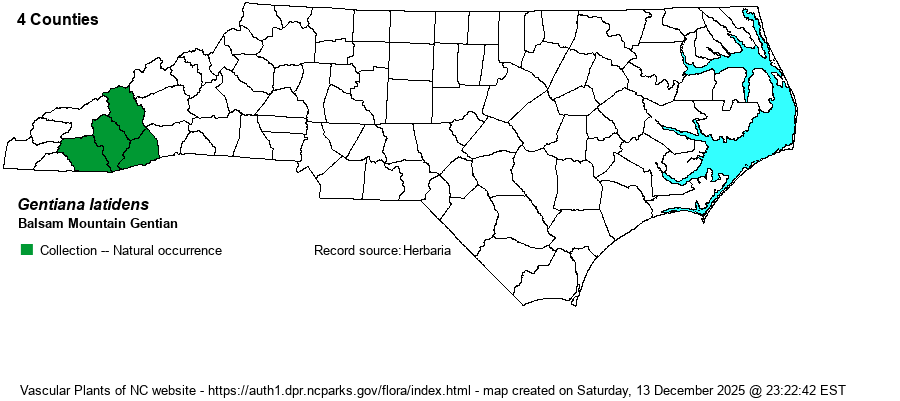| Author | (House) J.S. Pringle & Weakley | |
| Distribution | Limited to the southern Mountains, with records only from Haywood, Transylvania, Jackson, and Macon counties. This is a recently described species, in 2009.
Weakley (2018) says that this is an NC endemic, found only in these four counties. | |
| Abundance | As this is an endemic to NC, the Global Rank must match the State Rank. The NCNHP has given a State Rank of S1, whereas NatureServe ranks it as G1G2. This is a State Threatened species. | |
| Habitat | This is a species of moist places, usually in seepage on rocks, in high elevations. Some of the records are from road cuts/roadbanks, along the Blue Ridge Parkway, where there is seepage over these vertical to steep rock outcroppings. In general, most sites are sunny to barely in shade. | |
| Phenology | Blooms from September to October, and fruits shortly after flowering. | |
| Identification | This species is very to extremely similar to G. clausa, being a typical looking gentian of high mountains, with blue flowers and a distinctly closed corolla. Weakley (2018) gives these distinguishing characters for G. latidens: "Calyx lobes obovate, elliptic, ovate, orbicular, or rhombic, (3-) 5-25 (-35) mm; corolla lobes 2.5-5.0 mm". For G. clausa, he says "Calyx lobes widely obovate to orbicular, 2-10 mm; corolla lobes 0.7-2.0 mm". The wider range of G. clausa overlaps that of G. latidens, though a gentian growing from a vertical to steeply sloping rocky surface, with seepage, southwest of Asheville, has a good chance of being this species. It has slight corolla lobes extending beyond the pleats, whereas G. clausa has the lobes barely extending past the pleats of the corolla tube. In general, you can distinguish these two by the slightly larger flowers of G. latidens that have slightly less tight flower openings and the corolla that tapers more gradually (straighter sides) to the summit. G. clausa corollas tend to be somewhat rounded or convex and thus less "pointy". Note that two other wide-ranging montane "bottle" gentians -- G. decora and G. austromontana -- have strongly hairy stems and calyx lobes, and the first one has slightly opened corolla tips. | |
| Taxonomic Comments | As mentioned above, this species was first described in 2009. Supposedly is it an elevation of the former G. saponaria var. latidens to full species status, but it is very similar to G. clausa and easily confused with it.
| |
| Other Common Name(s) | None | |
| State Rank | S1 | |
| Global Rank | G1G2 | |
| State Status | T | |
| US Status | | |
| USACE-agcp | | |
| USACE-emp | FACW link |

